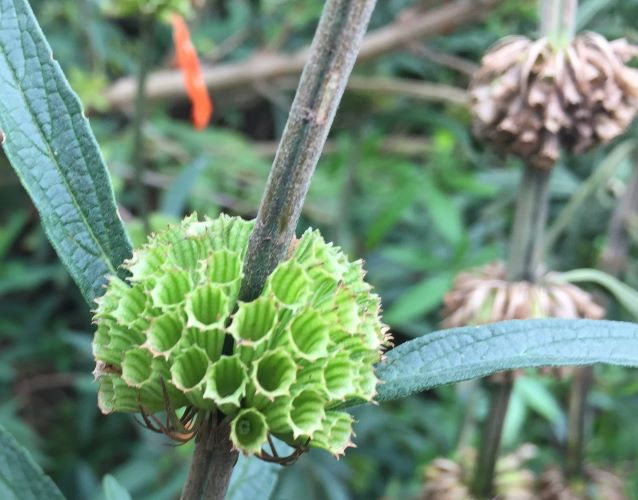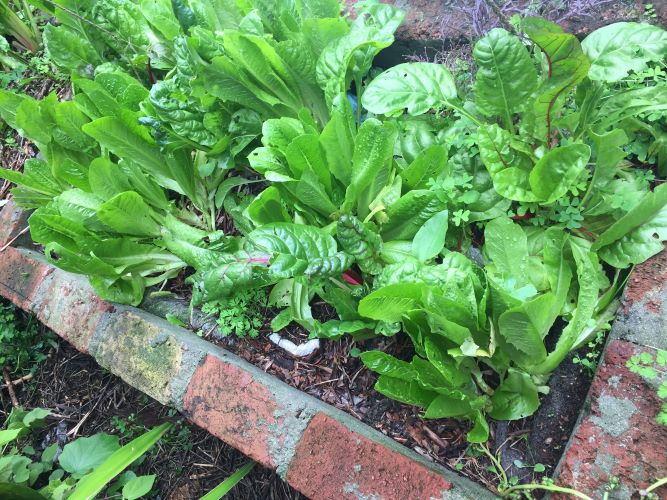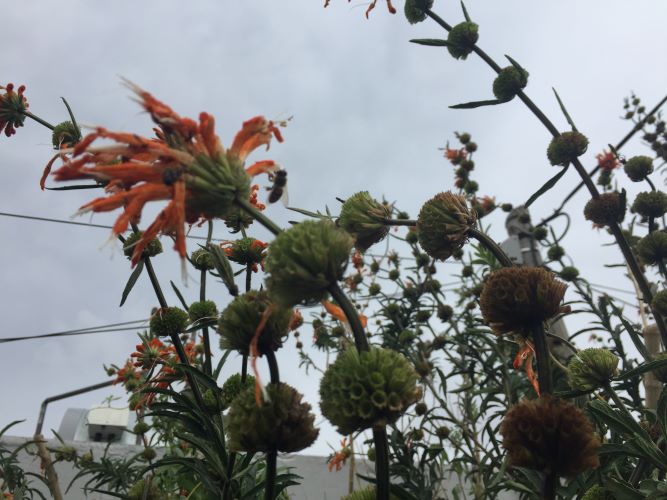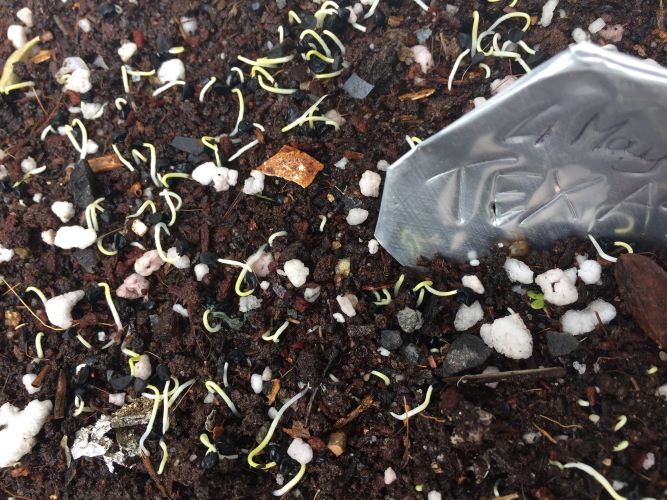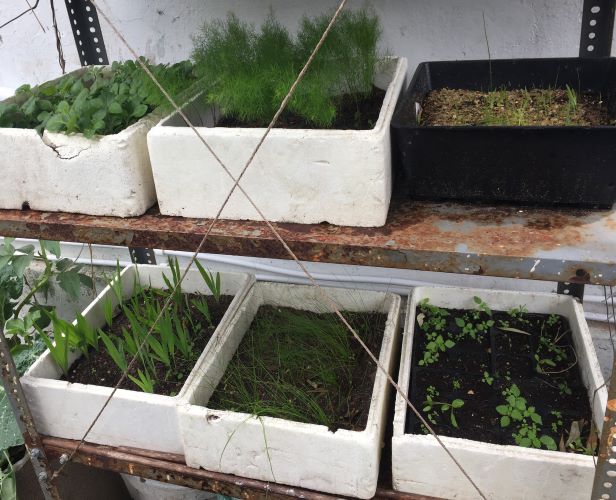| Back to Back Issues Page |
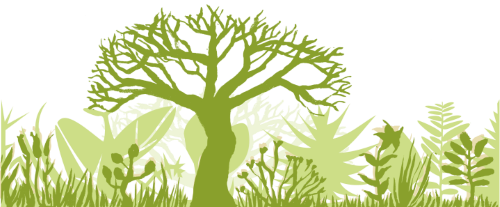 |
|
Restore Nature, Issue #001 -- restoration benefits to you ! June 14, 2023 |
HelloRESTORE NATUREThoughts on some of the challenges in biodiversity gardening and food growing, based on my experience.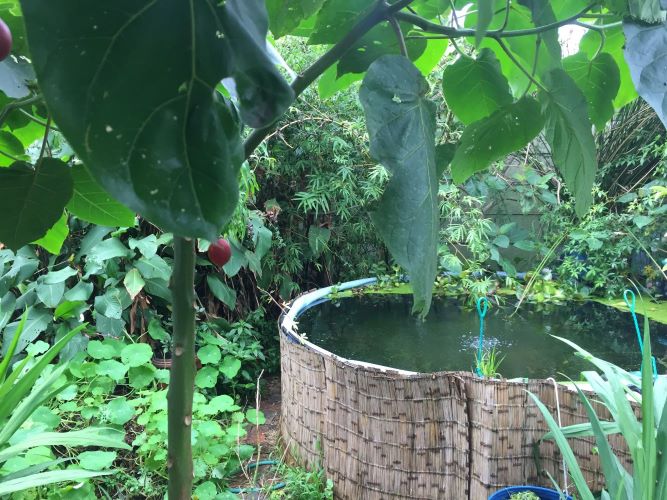
You will be forced to be patient.There is so much to learnThe gardener’s schooling takes a lifetime. A vlogger I was watching recently pointed out that we only have fifty or so seasons to learn from, depending when you start and how long you are able to carry on. I have seven seasons behind me now. It feels like the blink of an eye and makes me long for an extra lease on life as a gardener.
Growing native food plants and medicinalsGardening with diversity compounds the problem of learning. If it takes many seasons to learn how to grow garlic, onions, blueberries and a handful of the basic and most common food plants, how much longer it would take learning the needs of a range of native vegetables which grow close to home, on which there may be only scant growing information ! The plants may be adapted to our local climate, but it is only in the growing and the failures that we find out about germination, seed treatments, when to sow, what type of soil they tolerate and so on. Cues in the environment we found the seeds help, but they do not take us to the full extent of a plant’s possibilities. In a degraded urban environment the plant may have been lost in areas where it once thrived, and may be surviving in areas where it merely hangs on.I try to grow as many native food and medicinal plants as I can. In South Africa there are many barriers. The greatest is the historical barrier, the destruction through centuries of colonialism and then apartheid, of the knowledge base about our edible and medicinal plants. The old people who still have this knowledge are precious indeed. I wish I had access to such a mentor, but have to rely on books written by academics, and sometimes just wild guesses. Slowly increasing my garden’s native food stocks still does not cover my dietary needs and I’m forced to rely on exotic plants for the bulk.
Growing exotic food plantsLike everyone else who wants to re-wild their garden and diversify their diet, for sufficient calories and for the greatest health giving diversity we look further afield for more vegetable varieties. This adds a long list to the knowledge we need.The bulk of seed that is readily available in retail and mail order catalogues originates in areas of the world much wetter and colder than ours. Among these well known vegetables, we can look for varieties adapted to our conditions if possible. Onions and daylight were a good example. I have also found it is good to look on our own continent, and in similar climate zones on any continent. I’ve found that many African vegetables are very resilient in our zone, even if they come from the subtropics and we are Mediterranean, and have snow on the mountains in winter. Vegetables from other hot zones of the world also do well, once we have mastered their soil and moisture needs. This has taken me years, because horticultural information online can be so misleading. Usually the instructions are just too vague, and planting in a “frost free hot weather period, in good garden soil, with regular watering”, as an example, leads to plant genocide in my garden ! If I do master the growing of common vegetables as well as some widely used African, Asian and Mesoamerican ones in our conditions, the learning is not transferable to the zones of the world where most of my readers are battling the elements, and I apologize for this failing. Gardening knowledge, like law, is hard to transfer. Learning the ecosystem approachOn top of the mastery of specific plants grown for food, a biodiversity gardener has to learn to create an ecosystem, making many mistakes along the way of course. This knowledge is also place specific, and good function in a northern forest is not good function in desert shrubland and we get to the ecosystem health along different paths.Then we need to know how to support invertebrates in our garden, and sometimes there is no information on how to do this at all, depending where we live. The information on plants that support local insects is lacking in Cape Town. Northern hemisphere gardeners have much more information on this topic. In videos by Doug Tallamy, scientists can confidently state that a certain plant supports 500 invertebrates and another a mere 20. My questions about the topic locally just came up against blank walls. I started a Whatsapp group called Zoobot to record sightings of plant and invertebrate combinations to start collecting information. I hope that one day we will know which plants support the most wildlife in the Cape floral kingdom, the world wildlife heritage hotspot, the smallest and arguably most diverse plant Kingdom in the world.
The greatest diversity laboratoryGardens of the world constitute a fantastic sample size and living laboratory for experiments in boosting biodiversity.The purpose of my website is to record what I learn and thereby help others in my geographical area to conserve urban biodiversity. I also reach out to all people in the world bedeviled by some of the hurdles I face, and to every gardener who is trying. My partner and I sometimes argue about how many different things I’m growing. He claims we can only acquire really good marketable expertise if we focus on one plant at a time, or very few. He is brilliant at growing the plants he chooses, and certainly this maxim may be true but my counter argument is that diversity is my specialty. My garden is extremely lush for this area of the city, because I pay a lot of attention to the gardening wisdom and movements which help us garden in tandem with nature or support biodiversity: permaculture principles, regenerative agriculture and wildlife gardening. Some of the practices used are polyculture, twenty species cover crops, regenerating soil with compost, worms, constant plant cover and choosing plants which are known to support local wildlife. But I can’t say I’ve ever produced a perfect specimen of anything. For me there is too little time in life to focus on one plant at a time.
My own plant diversity experience thus farAt the suggestion of my partner I counted the plant varieties in my garden past and present, as well as utter failures, partial successes and great achievements. I got to 130 and still counting. There is enough diversity for an average urban vegetable garden, but probably not an impressive amount for a biodiversity enthusiast. I would love to know what others are doing, and how long it has taken them.Nonetheless the spreadsheet I put together inspired me because I always think of my garden as delivering about a 20% success rate but its just not true, it is more like a 20% failure rate, if you have the kind of optimistic standards I have. I take the survival of the plant, or it offering some kind of harvest as a success. The point is, the plants come to meet one more than half way. They are not as difficult as they seem in the thick of the experience of growing, they are thankful, if one can imbue them with emotion. The feeling of failure as a gardener comes from the brain’s tendency to fixate on negative information. On the spreadsheet I compiled, with some overlap of functions in the multi-purpose plants, there are 42 fruiting plants, 41 South African native plants, 34 leafy greens, 29 with flowers loved by pollinators, 23 soil improvers, 21 flavoring and medicinal herbs, 9 types of edible blooms, 4 plants eaten mainly for their edible stems, 2 which are good toilet paper substitutes and 1 that is very good for building. Everyone has different needs and their range of useful plants would be different. I’d like to take the native component up from 30 to 50%, as I’ve read that this is some kind of magical number for maintaining diversity. I’d like a lot more flowering plants. We have a long flowering season at the tip of Africa. There is something flowering at any time of year. Augmented by exotics, the pollinators should be well taken care of. So many ways to learnThere are many ways to learn, and one can do it with focus, or with a broad spectrum of minor experiments. For seven years I’ve ‘fired’ plants at my garden like buckshot, growing many plants which do not have growing instructions online or anywhere else. Some of this work has ‘stuck’ in the form of successful culture.
Marvelous seedsIn all of this the constant factor has been the use of seed to grow plants. My reason is that seed will give you greater genetic diversity and sometimes throw-backs to a genetic predecessor in the case of highly bred food plants like apples and lemons. The ancestral plants are sometimes tougher and more rich in phyto-nutrients, according to my research. I’ve heard that highly bred plants quite often do not grow true to type from seed, and this is why they are shunned by food forest builders, but this is exactly what I’m looking for. It isn’t really a disadvantage. For example, a lemon tree grown from seed produced small hard fruit and thorny branches, but I have never smelt anything like the fragrance of the rind of those lemons!Another reason for using seeds is that they are really easy to harvest when we’re collecting wild plants without damaging the mother plant by taking cuttings. Over the years I’ve learned which plants germinate easily. The difficult ones I try again and again.
The personal costs of biodiversity gardeningWe could be forgiven for asking how much all of this diversity will cost, but the cost has been minimal. I’ve bought about fifteen of these plants from nurseries. For the rest, most are from seed, a few are from other forms of propagules, like tubers bought at the Asian store. Its a really cheap hobby. Anyone can do it, within reason.However, to be honest, it is time consuming. There is no such thing as a self sustaining ecosystem of food plants requiring no inputs. The greatest of these inputs is time, and if we are keen to learn more, we have to put in more time, either across a broader span of years, or in our daily schedule. The cost of all this time becomes important. It has to be sustainable. Either the gardening must make money or we must have a highly paid income source that leaves time for gardening, such as a trust fund, or we need to inherit enough land to be able to live off it. The ease of access to gardening for everyone on earth may be one of the reasons its so hard to make money from this passion. It has no moat at all. Since I must garden, and I don’t have the trust fund, the land or the top earning job, I’ve been scouring the net for ideas on making money with gardening or homesteading. If you are interested in the ideas I found for earning from the gardening passion, and would like to know about the things I've tried already and how they did, let me know. |
| Back to Back Issues Page |
